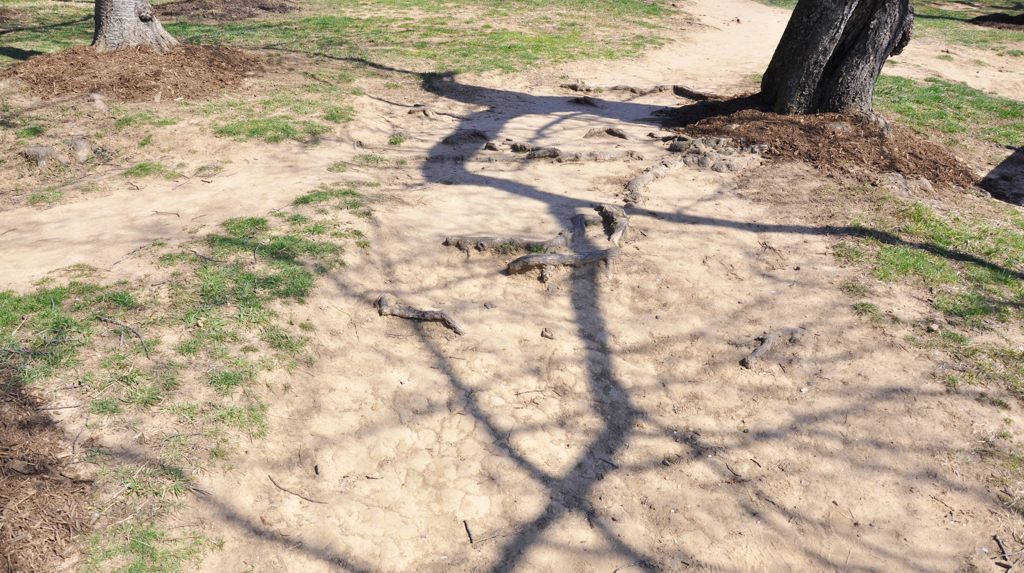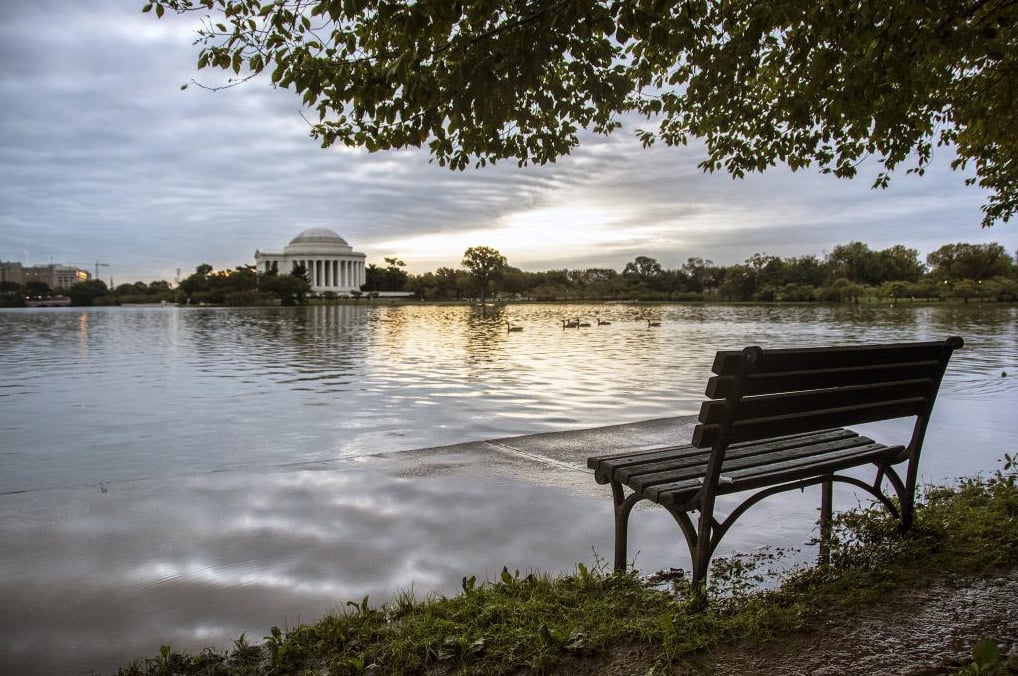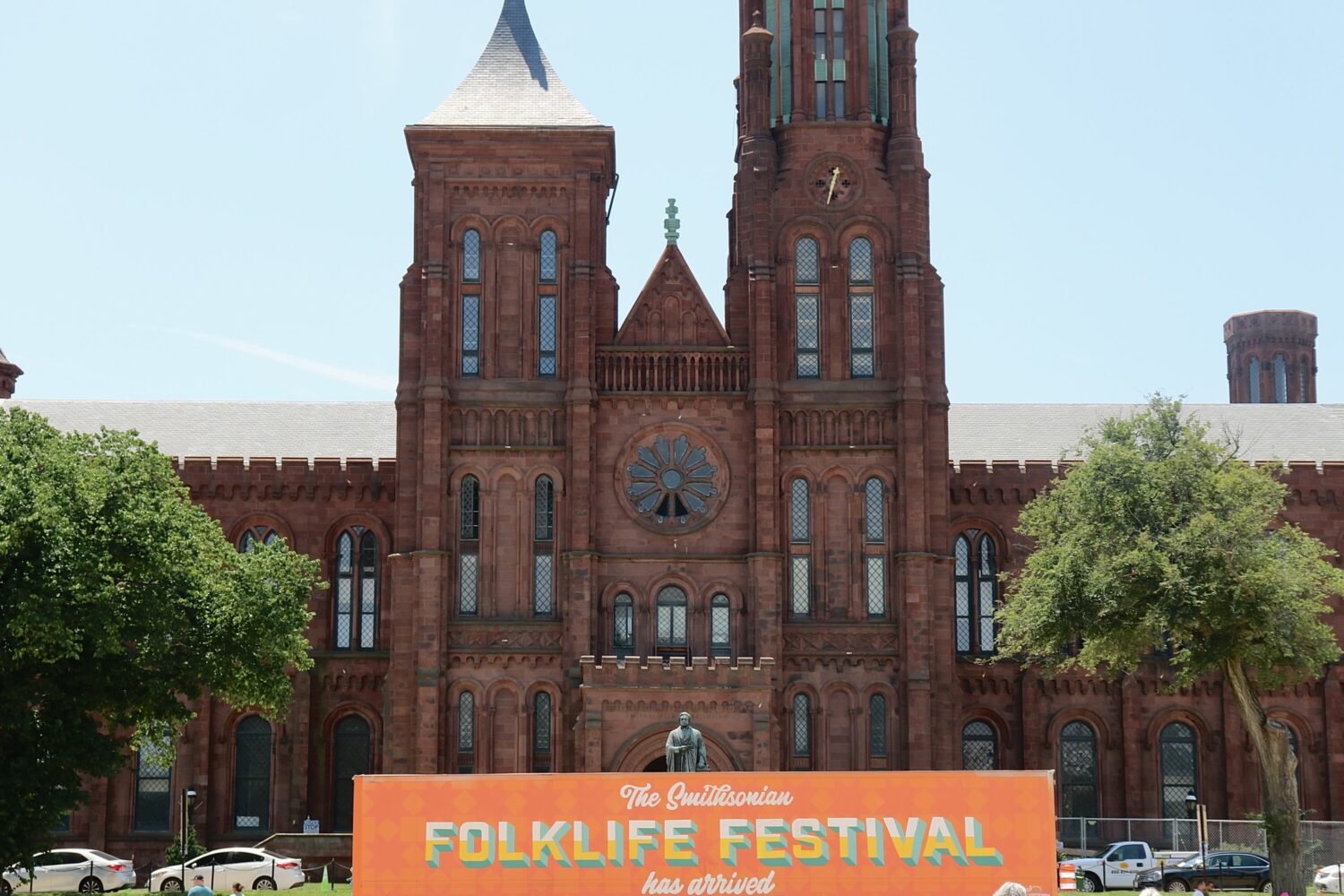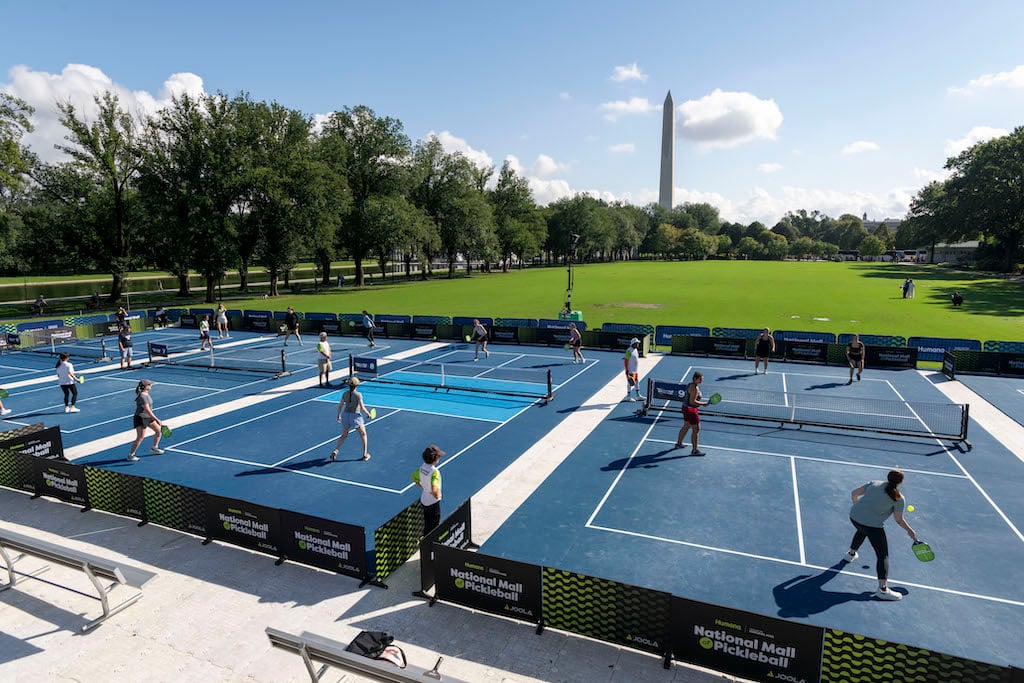A late-winter cold wave, combined with a Nor’easter storm that hit Washington Monday night, has cherry-blossom watchers bracing for the first possible spring during which DC’s celebrated crop of Japanese cherry trees fails to reach peak bloom. But even if the trees manage to endure snow, ice, and a week of frigid air, they face a more perilous future from non-weather interference.
The nearly 3,800 cherry trees around the Tidal Basin are under threat from continued decay of the seawall designed to keep the area from flooding, and from annual stampedes of tourists who ruin the soil around the trees and restrict the flow of oxygen to root structures, says the Trust for the National Mall. In a good year, about 1.5 million people visit Washington to take in the cherry blossoms and their pink-and-white petals. It’s a boon for the local economy, but one that endangers the prized trees the tourists come to see.
“Just the sheer volume of people sends the trees into stress,” says Kate Greenberg, the Trust’s marketing director. Visitors are often seen walking on the roots and even hanging off branches, in spite of many warnings from the National Park Service and other planners of the National Cherry Blossom Festival.
The results of all this do not bode well for cherry-blossom lovers. With the soil around their trunks pounded into dirt, many trees’ root structures attempt to poke through other spots, resulting in many cracks on the walkway ringing the Tidal Basin. And some trees are damaged enough that they have to be swapped out for fresh specimens. Every year, the National Park Service replaces about 90 trees at a cost of $600 each. Very few of the original trees, which were given to the United States in 1912, still remain on the Tidal Basin.
Greenberg says the Trust is raising money for an endowment that can be tapped to cover the cost of future tree replacements. But getting people to give the trees a wider berth is going to take stronger messaging.

Fixing the seawall may be even trickier. The wall is more than a century old in places, with many of its stones cracked or missing. The Tidal Basin is prone to frequent flooding during high tides, even more so after periods of heavy rain. Long eyed for repairs, the seawall has struggled to receive adequate funding to bring it back into shape. An early draft of the 2009 Recovery Act included $200 million for repairs to the National Mall, which would have included money for the Tidal Basin seawall, but that funding was yanked after Republican criticisms; the final bill gave the National Park Service about $750 million to be divided up across its entire system.
Without repairs, the sea wall will continue to erode and collapse, increasing the occurrence of floods, which damage the trees. The National Park Service has about $12.5 billion worth of deferred maintenance, with deteriorating sites on and around the National Mall accounting for about $800 million of that sum. An engineering survey of the Tidal Basin by the Army Corps of Engineers would cost the government about $2 million. There were no appropriations for such an effort in any funding bills for the current fiscal year. And despite Interior Secretary Ryan Zinke‘s statements that he will address the broader NPS backlog, President Trump‘s proposed budget—which is expected to reduce the Interior Department’s funding by 11 percent—does not bode well for those delayed repairs.
Still, even if repair projects on NPS sites come at an even greater premium in the next few years, the costs of dithering on the seawall could be ruinous. Spot tree replacements are just temporary fixes, Greenberg says. A collapse of the seawall would drown hundreds or thousands of trees, possibly ruining the cherry-blossom experience for good.


















